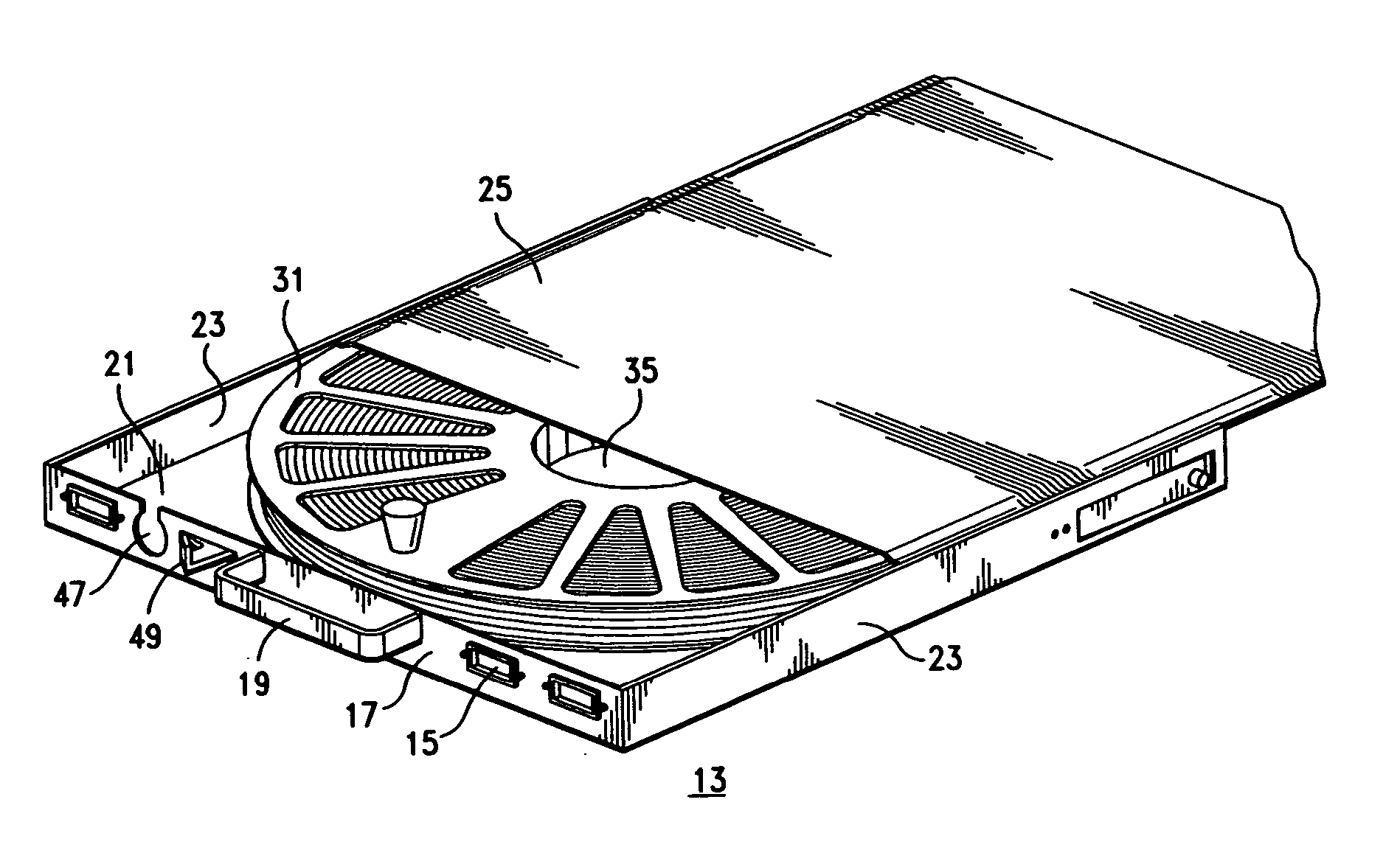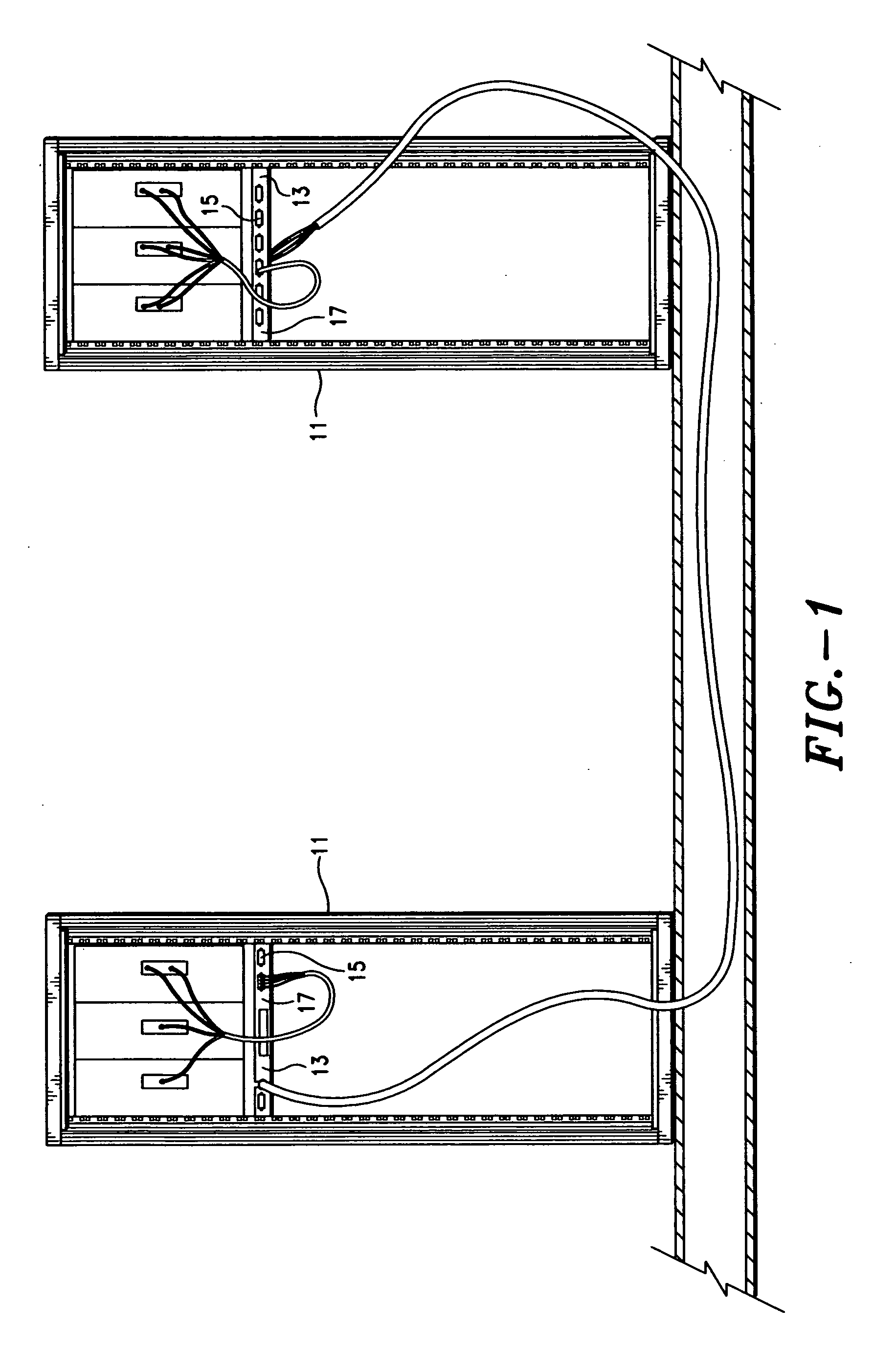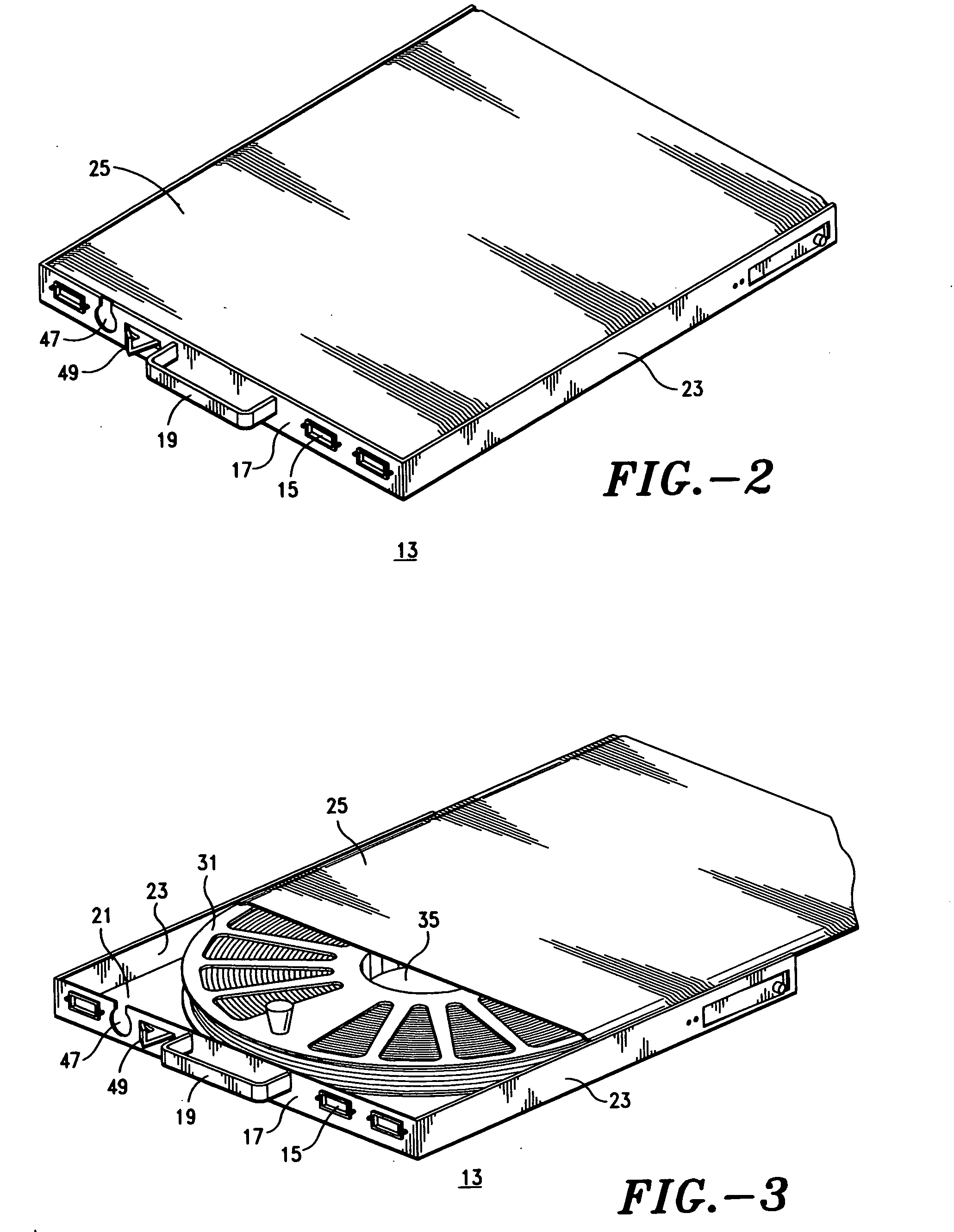Fiber optic cable enclosure
a fiber optic cable and enclosure technology, applied in the direction of electrical apparatus casings/cabinets/drawers, lighting conductor installation, coupling device connection, etc., can solve the problems of not meeting the requirements of fixed parameters of these devices, all data and telecommunications transmission companies require backup systems, breakdowns are tantamount to catastrophes, etc., to achieve maximum internal volume
- Summary
- Abstract
- Description
- Claims
- Application Information
AI Technical Summary
Benefits of technology
Problems solved by technology
Method used
Image
Examples
Embodiment Construction
[0049] Reference is made to the drawings for a description of the preferred embodiment of the present invention wherein like reference numbers represent like elements on corresponding views.
[0050]FIG. 1 shows a diagrammatic representation of the environment of the present invention which is a telecommunications and data transmission operations service center containing switching and server equipment.
[0051] Thereshown is a pair of cabinet racks 11 each containing a representative set of equipment. The present invention is a fiber optic cable enclosure 13 that is formed for providing the maximum internal volume therein for housing a cable storage reel in an enclosure which must fit in sliding horizontal reciprocating relation through or within an aperture having a fixed width and height formed in the front surface of a vertical rack. However, in actual operation, each of the racks contains a multiple of enclosures in a vertical stack. In a service facility, the spare cable enclosures...
PUM
 Login to View More
Login to View More Abstract
Description
Claims
Application Information
 Login to View More
Login to View More - R&D
- Intellectual Property
- Life Sciences
- Materials
- Tech Scout
- Unparalleled Data Quality
- Higher Quality Content
- 60% Fewer Hallucinations
Browse by: Latest US Patents, China's latest patents, Technical Efficacy Thesaurus, Application Domain, Technology Topic, Popular Technical Reports.
© 2025 PatSnap. All rights reserved.Legal|Privacy policy|Modern Slavery Act Transparency Statement|Sitemap|About US| Contact US: help@patsnap.com



